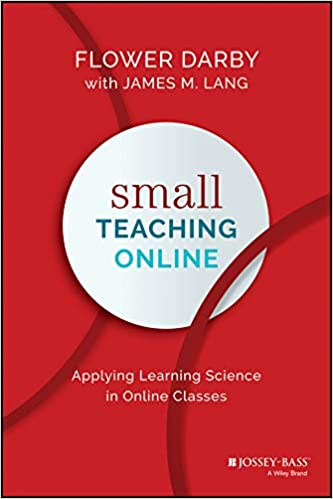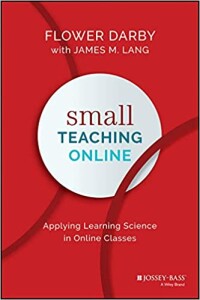As all of us in higher education know, March 2020 was a very difficult month. Perhaps the “ides of March” is a good way to describe the onset of the COVID-19 pandemic and the rapid “pivot” that all of our universities and colleges had to make as we transitioned from in-person to online instruction and rapidly moved all of our students back to their homes in the middle of the Spring 2020 semester. During that semester, as Dean of Faculty at Soka University, I was charged with helping our IT group and our Soka University faculty adjust to this difficult new reality, and to help our campus develop strategies and skills to completely overhaul our instruction within a few days to enable this shift to online instruction. Thankfully, our campus stepped up to the challenge, and the excellent work of our IT group enabled us to add in many new components to our Learning Management System to enable Zoom to be seamlessly integrated, and to also incorporate new programs for helping faculty provide more active online learning environments. Working with the IT group, we planned a series of workshops for faculty in the days before Spring Break to train them in using Zoom, as well as other online technologies and to introduce some of the new capabilities of our LMS. Within a week we set up a series of 4 workshops which were offered both in-person and online, expanded our LMS capabilities, set up blogs and websites for faculty to share ideas about online teaching, and also informed our students of these new developments.
One other interesting challenge was to try to adapt our teaching strategies for the online environment. Working closely with our Curriculum Committee, and its wonderful chair, Phat Vu, we set up a series of meetings to discuss the needs of faculty for online teaching and some of the lessons we were learning as we began our online instruction. These discussions went on throughout the Spring semester, and we used what we learned to identify some key technologies and ideas for teaching online. I worked in the Dean’s office to help set up a faculty blog for sharing ideas for online teaching, and also designed and maintained a new website for online teaching for SUA faculty to share resources, technologies and guides for effective online teaching. One really useful new technology was the program known as Perusall, which enables faculty to assign readings to students and then allows students to read, annotate and comment on the readings in a social media type online environment. We managed to get our IT group to integrate Persusall with our LMS, and various teaching groups offering some of our required GE courses like our Core II class shared lots of good ideas for arranging good online discussions and readings in this new environment. I had heard about this program while in Singapore, when we invited Eric Mazur to our campus at Yale-NUS, and it was wonderful to see it used to great effect in our SUA courses.
As we rounded off the second half of the Spring 2020 semester, discussions among faculty and students indicated a number of successes, and some challenges. Teaching music was very difficult as the Zoom sessions introduced small latencies which made it difficult for students to sing or perform together. Our very resourceful music faculty were able to instead work one on one with students also have students submit recordings for use in group music making. We also noticed that the student time zones, distributed around the clock, made our “synchronous” teaching very difficult. This was something our faculty were able to adapt to but only with heroic efforts. One faculty member made two presentations for each of his classes – one at the regularly scheduled class time in PST and the other at 10PM-midnight, to allow for our students in Asia and across the world to participate. Many of our faculty arranged for tutorials or individual sessions for students who were distributed around the world. Since Soka University uniquely has nearly half of its students from outside the US, distributed across 40 different countries, we had a unique challenge on our hands.
In the planning for Fall 2020, we tried to learn from our experiences in that Spring. We set up a series of workshops during the summer to help faculty learn effective online teaching strategies. One event which was very effective was a workshop with author Flower Darby, whose book Small Teaching Online, was a great resource for effectively teaching online. I offered all the faculty a free copy of this book, and then we had a wonderful 90 minute workshop from Flower Darby where she presented a number of really great strategies for preserving the intimacy of an in-person classroom in the online setting. Our IT group set up literally dozens of sessions during the summer to train faculty in specific technologies. Since all of these sessions were recorded, faculty could view them online at their convenience.
Most amazing was the way in which we were able to reconfigure our class schedule. Since students were located in many time zones, we made a chart of the number of students in each time zone and then overlaid their waking hours on times within PST from 6AM to midnight. We realised that since we had a large number of students in Asia, we could reach a majority of our students in a synchronous format by opening up a number of classes in the 4PM-midnight range of times. Here too our faculty stepped up, and each of our concentrations and programs met to reconfigure their class schedules to fan out across all of the waking hours in California. We also preserved two times each day without classes – one around noon and another time around 7PM – to allow for meetings for both faculty groups and student organisations. Amazingly all of this came together in late May in advance of our registration period for Fall 2020. Even better, we were able to decide that we would be going online before class registration so students could sign up for their classes knowing that they would be online for Fall 2020. Somehow the class rescheduling, decision for Fall 2020, and registration all came together during the summer, followed by a period of training during the summer, where faculty had the time to think about online teaching and plan for the upcoming semester.
Because of the training, the rescheduling and the care and effort of our faculty, we were able to have a very smooth Fall 2020 semester. We all miss our students on campus – and Soka University has become something of a wild animal park with deer, racoons, hawks and other creatures cavorting on our campus in the absence of our wonderful students. We are very excited about bringing students back for Spring 2021 however, when we should have almost half of our students back on campus and the rest of the students studying remotely. This will require us to learn (or “pivot”) to yet another modality of teaching – the “hybrid” class, which mixes in-person and remote students in a way that engages all of them. I will be teaching again in Spring 2021 with a mix of in-person and remote students, and will be sure to post about that experience as we get closer to the new semester.


